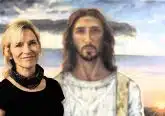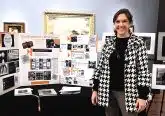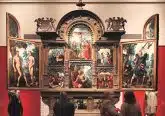A Few Notes on Sculpting Time

I’m a filmmaker by trade and philosopher by degree, thus I often procrastinate. One favorite procrastination method is mulling the question: What is the Catholic artist’s call — particularly the Catholic filmmaker— in society? Or rather, what is the filmmaker’s call, considering the call of Christians?
When someone expresses a thought much better and truer than I can, I have two options: say it simpler or simply acknowledge they said it so much better and truer that I must quote them at length. The latter is how I feel about these words from the great Russian director Andrei Tarkovsky:
“The allotted function of art is not, as is often assumed, to put across ideas, to propagate thoughts, to serve as example. The aim of art is to prepare a person for death, to plough and harrow his soul, rendering it capable of turning to good. Touched by a masterpiece, a person begins to hear in himself that same call of truth which prompted the artist to his creative act. When a link is established between the work and its beholder, the latter experiences a sublime, purging trauma. Within that aura…the best sides of our souls are made known, and we long for them to be freed. In those moments we recognize and discover ourselves, the unfathomable depths of our own potential, and the furthest reaches of our emotions.”
In short—whether poetry or painting, Swan Lake or oboe playing—art’s purpose is essentially contemplative, not rhetorical, so that it gets you to see something, rather than do something. It is not primarily advertising or propaganda, instead, by purging our hearts and ordering our emotions, art enables us to see life with greater clarity. And this prepares us to face death free and full of hope.
Of all the arts, film is especially suited to open our eyes, ears and ultimately, our hearts by enveloping us in sight and sound. Tarkovsky points out film’s unique ability to “sculpt time.” The director can mysteriously capture, cut and move pictures and sounds around, to “seize and render the passage of time…stop
it, almost to possess it in infinity,” like a memory or dream. Thus, the filmmaker has an incredible opportunity to share an experience— a memory, dream, or story – that can at the same time expand the mind and still the heart, offering a glimpse of eternity in 24 frames.
All this gives us insight into what it means to be a Catholic filmmaker. Our responsibility is “to recreate life, its movement, its contradictions, its dynamic and conflicts,” our duty is “to reveal every iota of the truth” we have seen, even “if not everyone finds that truth acceptable.” We are called to share the moments we held on to faith, the dreams that gave us hope, the sacrifices that deepened our love—even the jokes that kept us smiling when we wanted to despair. Perhaps especially that. To give an account of the joy that is in us, in all its strangeness, particularity, mystery, intrigue, romance, with all its thrills and laughter—that is our task.
In It’s a Wonderful Life, when George Bailey begs to live again, we do too. And that’s our power as Catholic artists, to stop time and witness to the truth, to share why we dare to hope that all things will be made new.
It’s a relief, honestly, that in films we aren’t necessarily called to spell out truth or dissect meaning with a scalpel. Overly didactic movies don’t sit well for a reason: A film’s power isn’t in advertising, it’s in empathy. As Tarkovsky said, “If you look for meaning, you’ll miss everything that happens.” To unpack that thought, I suggest his book, Sculpting in Time, because he’s a master and I’m running out of room.
I suggest this is the Catholic filmmaker’s role: to sculpt memories, dreams, imaginings – to offer a thrilling, mysterious, romantic, hilarious account of the hope that is in us. To harrow the soul with seeds of a new vision, new dreams, new life.
Joe Duca is the award-winning indie writer-director of Evergreen (2020) and Her Name Was Jo (2021), and a graduate of Christendom College.
This article appeared in the February 2022 edition of The Catholic Telegraph Magazine. For your complimentary subscription, click here.













